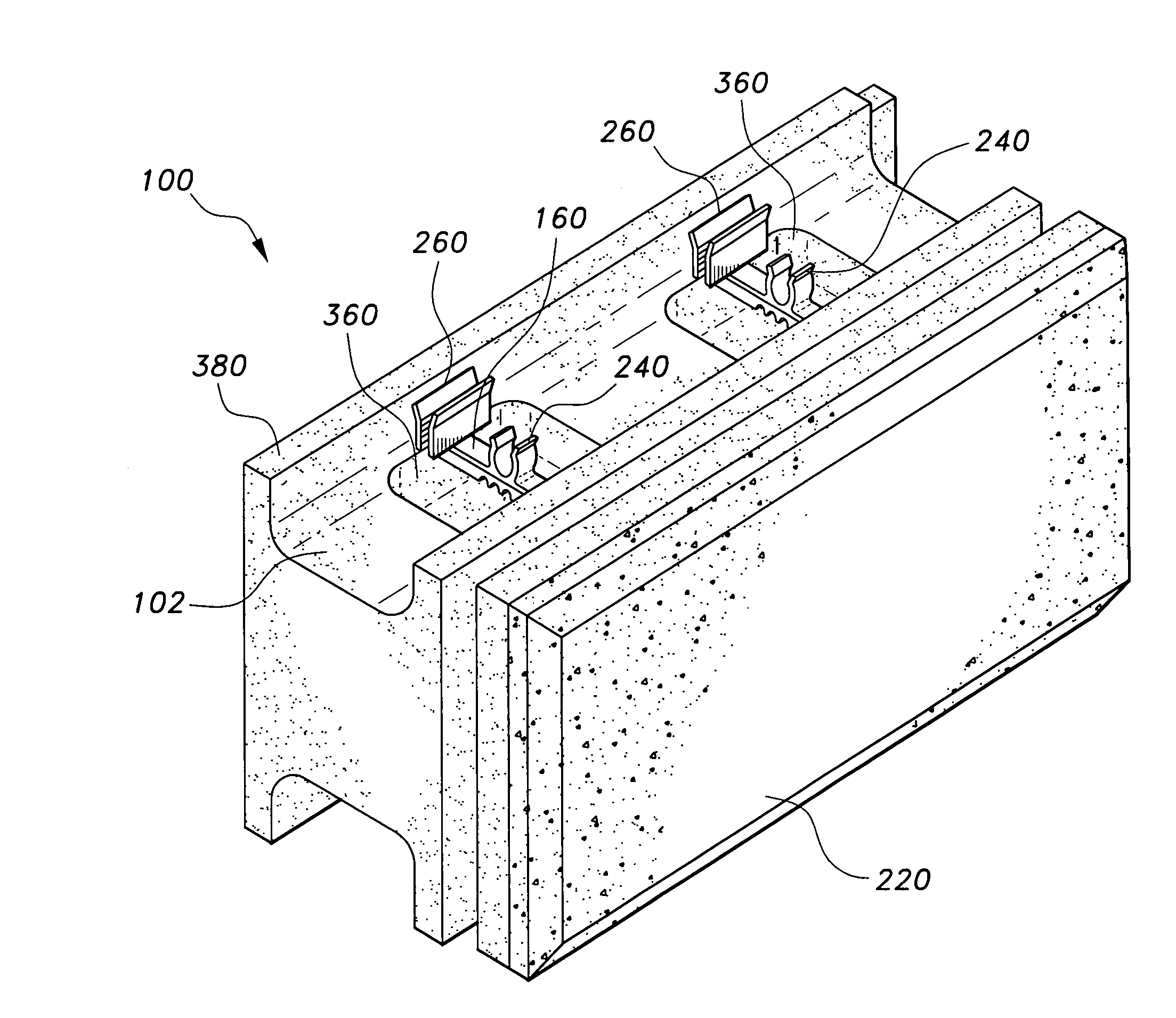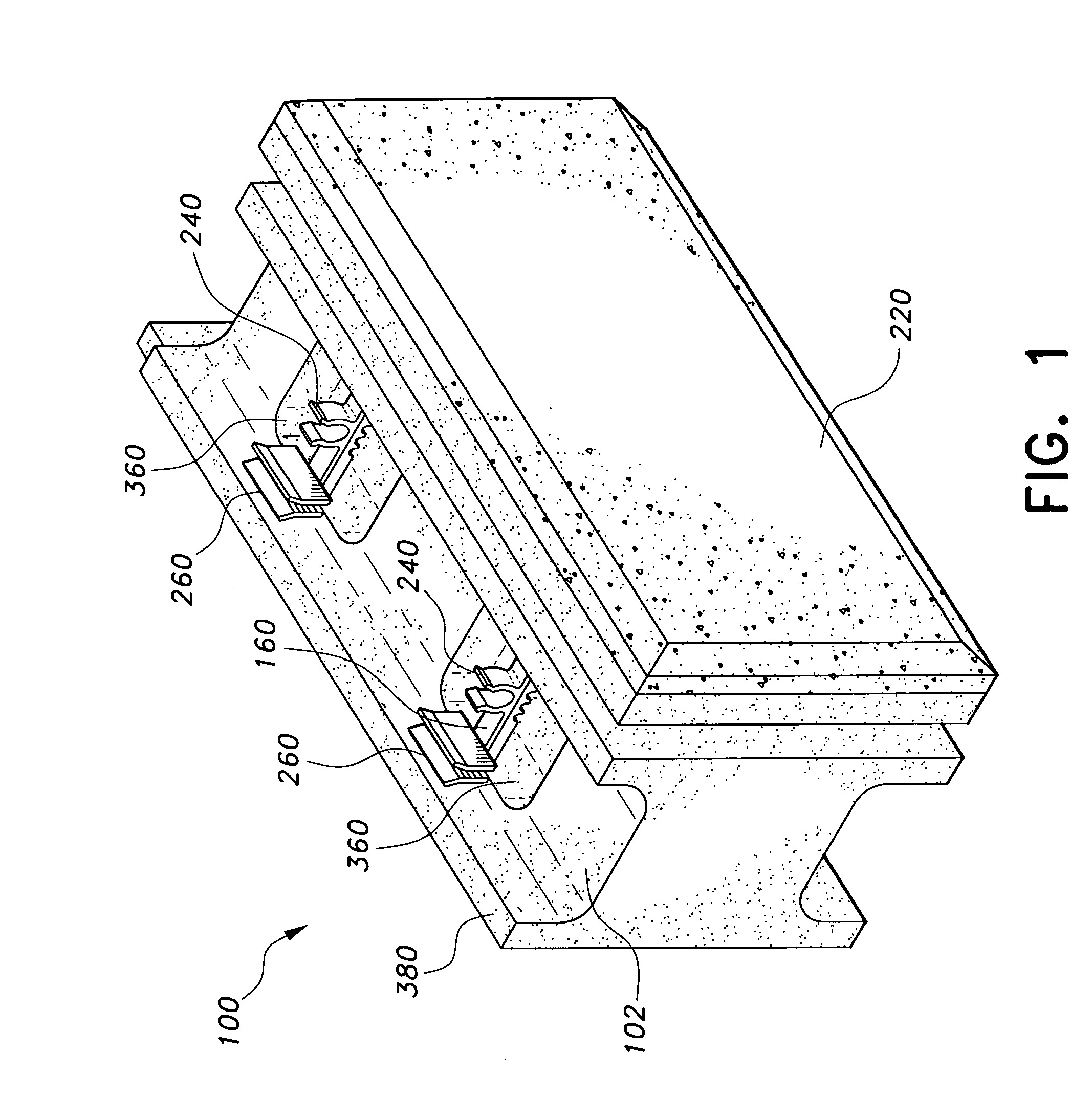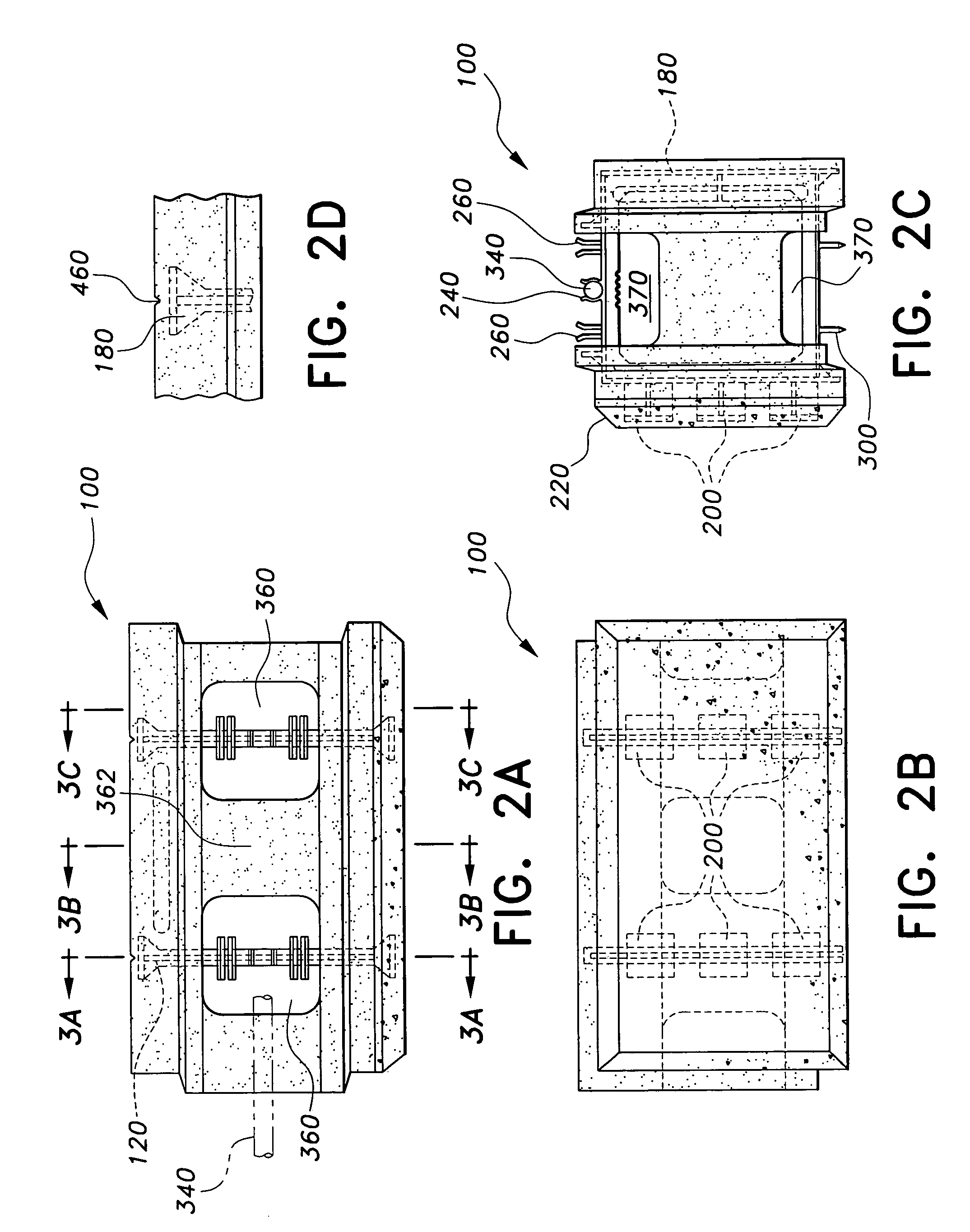Snap-in-place building block
a technology of building blocks and building blocks, applied in the field of building materials, can solve the problems of increasing construction costs, requiring a great deal of time and skill, and presenting a very pleasant appearance, so as to reduce the time and cost of construction
- Summary
- Abstract
- Description
- Claims
- Application Information
AI Technical Summary
Benefits of technology
Problems solved by technology
Method used
Image
Examples
Embodiment Construction
[0042]The present invention is a snap-in-place building block, designated generally as 100 in the drawings, also referred to herein as a “building block.”FIG. 1 shows a perspective view of the snap-in-place building block 100. The snap-in-place building block 100 is made up of several components to form a single unit as shown in FIG. 1. The first of the components making up the snap-in-place building block 100 is an internal support bracket, designated generally as 120 and shown in a perspective view in FIGS. 11 and 12, and in greater detail in FIGS. 10A–F.
[0043]The internal support bracket 120 is made of durable plastic, preferably by injection molding. The internal support bracket 120 comprises a generally rectangular open frame 140 surrounded by a flange 160. The flange 160 has a top, bottom, right side and left side. The left side of the flange 160 is wider than the other three sides of the flange 160 and forms a furring strip 180 that acts as a wall stud for the attachment of g...
PUM
 Login to View More
Login to View More Abstract
Description
Claims
Application Information
 Login to View More
Login to View More - R&D
- Intellectual Property
- Life Sciences
- Materials
- Tech Scout
- Unparalleled Data Quality
- Higher Quality Content
- 60% Fewer Hallucinations
Browse by: Latest US Patents, China's latest patents, Technical Efficacy Thesaurus, Application Domain, Technology Topic, Popular Technical Reports.
© 2025 PatSnap. All rights reserved.Legal|Privacy policy|Modern Slavery Act Transparency Statement|Sitemap|About US| Contact US: help@patsnap.com



